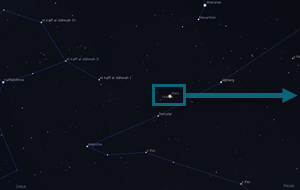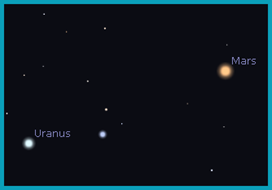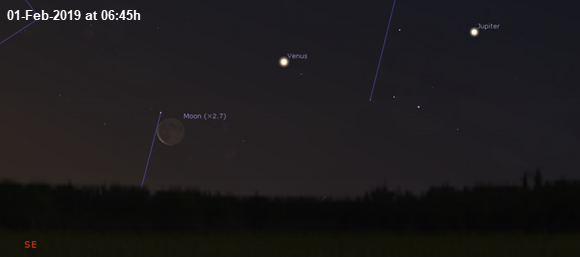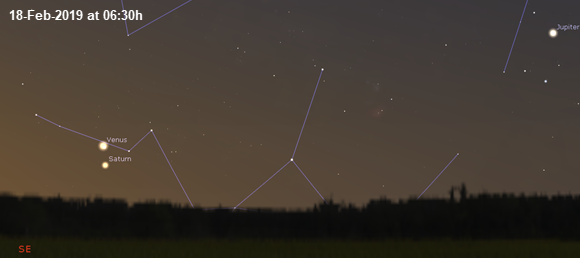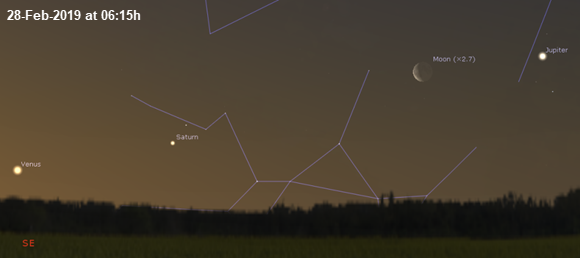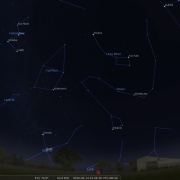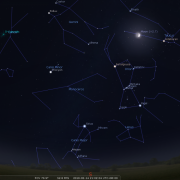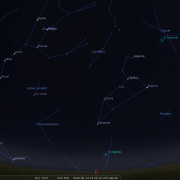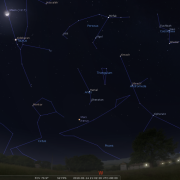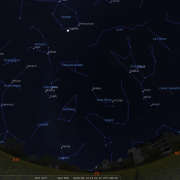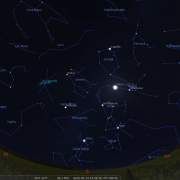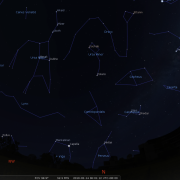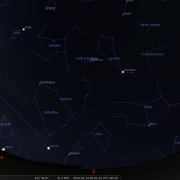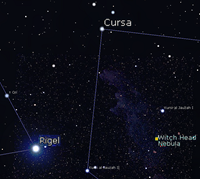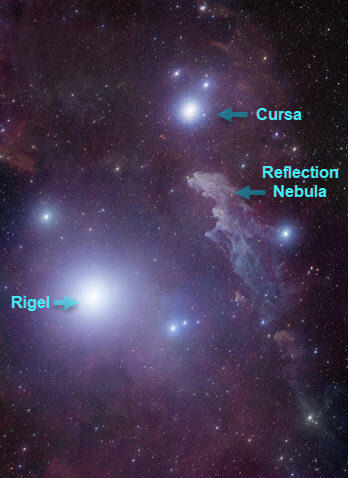Welcome to the WDAS monthly newsletter for February 2019: a digest of the month's latest contributions to our website. Below you'll find Society News, Sky Notes and Mark's feature article Crossing the Line; along with up-coming event details and photos of last month's Lunar Eclipse.
Society News
 It’s that time of year again when half term holidays coupled with dark nights, will hopefully coincide with clear skies, so we have a busy few days at the start of March. First up is Fyling Hall School on Friday 1st March.
It’s that time of year again when half term holidays coupled with dark nights, will hopefully coincide with clear skies, so we have a busy few days at the start of March. First up is Fyling Hall School on Friday 1st March.
Inspired by the North York Moors National Park’s Dark Skies Festival, Fyling Hall School have invited us to host their very own Stargazing Party on March 1st (Friday). The event is also being co-promoted by Baytown Coffee, so perhaps something warm and welcoming will be on the cards.
It has been a few years since we last visited the School for a star night event, and it will be nice to renew ties. The boarding students will be flogged enlisted to help out with a scaled solar system demonstration before observing is commenced, (weather permitting), with members pointing out what to look for in the winter/early spring night sky.
The location will be the front lawn of the School (facing the sea) starting around 19:20h. We shall therefore need to be present on site shortly after 19:00h.
The event has been publicised in the Whitby Gazette, but further details can be found by contacting Angelique at marketing![]() fylinghall.org .
fylinghall.org .
Who knows what the conditions will be like (certainly the weatherman don’t) so Plan B and C will be lurking in the wings.
 On Saturday 2nd, we shall, weather permitting, be called in to action again at the Danby Moors Centre, for their Dark Skies Week event, coinciding with the schools half term. This is their ‘flagship event’ and if skies are clear we shall need assistance from members regarding scopes/transport, similar to the event held last October.
On Saturday 2nd, we shall, weather permitting, be called in to action again at the Danby Moors Centre, for their Dark Skies Week event, coinciding with the schools half term. This is their ‘flagship event’ and if skies are clear we shall need assistance from members regarding scopes/transport, similar to the event held last October.
Hopefully skies will be clear this time round, if so we shall be observing some of the jewels of the winter sky. The event runs from 19:00-21:00h, so we shall be setting off around 18:10h to allow time to set up equipment. These National Park events for the North Yorkshire area have been highlighted in the Astronomy Now Magazine, and we expect it to be sold out (If previous star party nights are anything to go by) so 60-80 people will be braving the winter air.
Astronomically speaking March 2nd is still winter, and the weather may dictate what is possible on the night, (even getting there) Suffice to say if conditions are hazardous it will be called off, but if cloud is our only problem, plan B will be used to good effect (ie. an indoor presentation). More details will be given at the February meeting.
Blimey O’ Reilly, I don’t believe it, skies were actually clear for one of this year’s astronomical highlights, so I hope you set the alarm and viewed it. I had set my camera and tripod up the previous evening, so when the phone alarm jolted me out of my slumber around 04:45h, I only had to don some warm attire and wander out into the back garden to view proceedings.
Totality was centred on 05:15h and therefore the moon was already in umbral eclipse, and a beautiful sight it was too, quite light in hue, so perhaps more light was being refracted around the earth than usual. Using a SDLR 200mm lens, I tried various exposures, times and ISO’s; trial and error really, much trial and many errors, precise focussing being the bug-bear, but I managed a few half decent images.
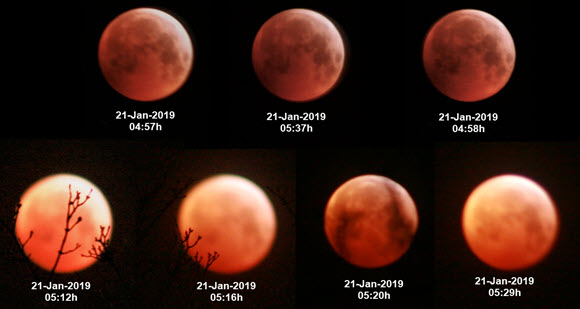
Looking around the clear sky, the spring constellations were already crossing the S meridian, with Leo and Virgo well presented.
The bizarre thing was for that time of morning it didn’t actually feel that cold, and in fact it felt and looked much colder at 08:00h – just weird. By 05:30h I thought my work done and retired back to my hot water bottle and the land of nod. If your alarm failed to go off and you missed it, there is not another total lunar eclipse visible from the UK until May 2022, but not in entirety, for that we have to wait until the last day of 2028 and better still – from start to finish Dec 2029!
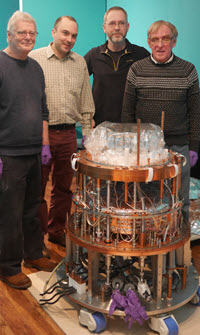 This exciting exhibition sponsored by the Royal Society at Whitby Museum opens on February 16th and will showcase the importance of Whitby and the surrounding area in investigating the cosmos, from Captain Cook’s 1768 voyage mapping the transit of Venus to the current search for Dark Matter at Boulby Underground Laboratory.
This exciting exhibition sponsored by the Royal Society at Whitby Museum opens on February 16th and will showcase the importance of Whitby and the surrounding area in investigating the cosmos, from Captain Cook’s 1768 voyage mapping the transit of Venus to the current search for Dark Matter at Boulby Underground Laboratory.
The exhibition will be opened on the evening of the 15th, with a public lecture in The Normanby Room entitled “The Search for Dark Matter”, given by Professor Henrique Araujo of Imperial College London (which I believe is fully booked already), telling of the internationally important work being carried out at Boulby Underground Laboratory.
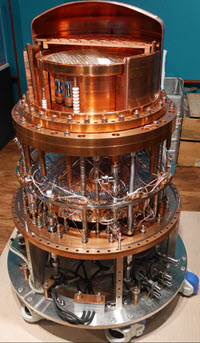 Apparatus from the DM facility will be on show at the museum – including the ZEPLIN-III detector. With WDAS members very much involved (Phil Richards especially) a small part of the exhibition room has been set aside for the society to utilise and material for this purpose is currently been gathered and put together. The exhibition runs until July 20th.
Apparatus from the DM facility will be on show at the museum – including the ZEPLIN-III detector. With WDAS members very much involved (Phil Richards especially) a small part of the exhibition room has been set aside for the society to utilise and material for this purpose is currently been gathered and put together. The exhibition runs until July 20th.
If any society members can spare an hour on occasion to actually be in attendance at our part of the exhibition, it would be good for publicity.
If you have not already done so (and you haven’t had a visitation from Mark) subscriptions for the coming year are due. Happily subscription rates have been kept the same i.e £12, for adults with subsidized rates at £8 for under 16’s.
You can bring subs along to the W.D.A.S monthly meetings in January or February at the very latest. If you cannot make the meetings
Cheques are made payable to: “Whitby & District Astronomical Society". Please address to Mark Dawson at 33 laburnum Grove, Whitby. YO211HZ.
Many thanks for your continued support.
Hussar! A new laptop at last! Well, it was about time, our existing one getting on for 8 yrs old, slowing-up, taped-up and most probably fed-up. The new one (an HP) is much quicker, smaller, lighter and better capable of running the newly released upgrade of the Starry Night program we utilise for the meetings etc. Good timing really.
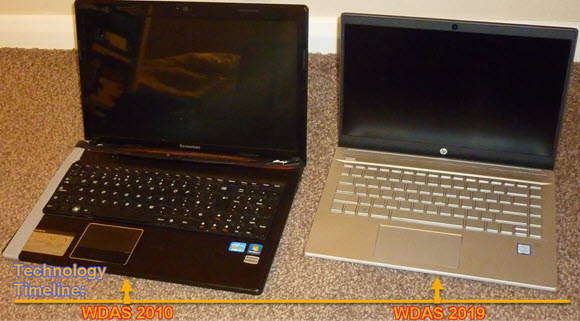
The only thing we need to master now is how to use them to their full potential. Yes ‘first night nerves’ seemed to afflict the set up for the January meeting. We are confident that the gremlins are now behind bars!
Sky Notes
In this month's Sky Notes:
Planetary Skylights
Evening Planets
 Mars is still evading the clutches of twilight as we head through February, cutting across the ‘ribbon’ of Pisces and up into Aries. Look for the still rather conspicuous red planet in the SW on Feb 11th, 12th and 13th around 18:00h, when it passes close by distant Uranus, a great opportunity to spot the 7th planet out.
Mars is still evading the clutches of twilight as we head through February, cutting across the ‘ribbon’ of Pisces and up into Aries. Look for the still rather conspicuous red planet in the SW on Feb 11th, 12th and 13th around 18:00h, when it passes close by distant Uranus, a great opportunity to spot the 7th planet out.
 At Magnitude + 5.8 you probably won’t see Uranus with the naked eye, and even in binoculars it will only show up as a blurry apple white star lower left of Mars (12th). Through a telescope however, you can resolve the tiny 3.5 arc second disk, (Mars will be just under 6 arc seconds) and at very low eyepiece magnification both planets should fit into the same field of view, around one degree apart with a nice contrast of hues, orange and ghostly green! The Crescent Moon lies 6 degrees south of the pair on the 10th.
At Magnitude + 5.8 you probably won’t see Uranus with the naked eye, and even in binoculars it will only show up as a blurry apple white star lower left of Mars (12th). Through a telescope however, you can resolve the tiny 3.5 arc second disk, (Mars will be just under 6 arc seconds) and at very low eyepiece magnification both planets should fit into the same field of view, around one degree apart with a nice contrast of hues, orange and ghostly green! The Crescent Moon lies 6 degrees south of the pair on the 10th.
 Mercury arcs up into the evening twilight sky from mid February for its best apparition of the year reaching its greatest elongation east of the Sun on the 27th (18 degrees). Look for this elusive planet not far above the WSW horizon around 17:45-18:00h. It will be brightest at the start of the apparition (Mag 1.2), bright enough to quite easily spot with the naked, but it will lie closer to the horizon (by a few degrees) so a clear unobstructed aspect is a pre-requisite. If it does elude your eyes, use binoculars to help spot it, compass bearing 250 degrees. As the month progresses Mercury will gain in altitude but gradually diminish in brightness, and by the 27th should be almost 10 degrees above the horizon. Telescopically there is not a great deal to view, but you may notice the phase alter from a fat gibbous at the start of the apparition to a first quarter, by the start of March. A tip when observing is to try and view 45 minutes to 1 hour after sunset.
Mercury arcs up into the evening twilight sky from mid February for its best apparition of the year reaching its greatest elongation east of the Sun on the 27th (18 degrees). Look for this elusive planet not far above the WSW horizon around 17:45-18:00h. It will be brightest at the start of the apparition (Mag 1.2), bright enough to quite easily spot with the naked, but it will lie closer to the horizon (by a few degrees) so a clear unobstructed aspect is a pre-requisite. If it does elude your eyes, use binoculars to help spot it, compass bearing 250 degrees. As the month progresses Mercury will gain in altitude but gradually diminish in brightness, and by the 27th should be almost 10 degrees above the horizon. Telescopically there is not a great deal to view, but you may notice the phase alter from a fat gibbous at the start of the apparition to a first quarter, by the start of March. A tip when observing is to try and view 45 minutes to 1 hour after sunset.
Dawn Planets
We shall now turn to the dawn sky, where there is plenty of planetary action.

 Having swapped places with Jupiter after their spectacular conjunction last month, brilliant Venus continues to drift down toward the SE horizon encountering Saturn on the 18th coming the other way. Venus will lie above Saturn on this date, view around 07:00h. On Feb 2nd Saturn is occulted by the moon, unfortunately from our location only the re-emergence of Saturn will be visible as the moon rises around 06:40h.
Having swapped places with Jupiter after their spectacular conjunction last month, brilliant Venus continues to drift down toward the SE horizon encountering Saturn on the 18th coming the other way. Venus will lie above Saturn on this date, view around 07:00h. On Feb 2nd Saturn is occulted by the moon, unfortunately from our location only the re-emergence of Saturn will be visible as the moon rises around 06:40h.
 Jupiter continues to draw away from the SE horizon, and is a fine sight through a telescope. Look for the banded disk and the Galilean moons strung out nearby. Dates of interest when there is a shadow transit of a moon are:
Jupiter continues to draw away from the SE horizon, and is a fine sight through a telescope. Look for the banded disk and the Galilean moons strung out nearby. Dates of interest when there is a shadow transit of a moon are:
- Ganymede: February 2/3rd – 05:30h.
- Europa: 6/7th around 05:00h and again on the 13/14th when a shadow transit starts just after 06:00h.
- Finally Io: has shadow transits on the 7/8th and 23/24th around 06:00h.
- The Great Red Spot is favourably placed to observe on the disk on the following dates: Feb 7/8th, 9/10th, 14/15th, 19/20th, 24/25th and 26/27th. View 04:45-06:00h.
 Finally a waning Crescent Moon passes through this part of the dawn sky on the 1st and 2nd and again from 28th Feb to 2nd March. Speaking of The Moon, the full Moon on the 19th is yet another ‘super moon’, the popular name given to any perigee full moon; ie one that is slightly closer to the earth at that phase. (We’ll be having super new moons next!) At this particular one the moon will lie at a distance from earth of 357,967km and will be 33 arc minutes and 25 arc seconds in apparent diameter.
Finally a waning Crescent Moon passes through this part of the dawn sky on the 1st and 2nd and again from 28th Feb to 2nd March. Speaking of The Moon, the full Moon on the 19th is yet another ‘super moon’, the popular name given to any perigee full moon; ie one that is slightly closer to the earth at that phase. (We’ll be having super new moons next!) At this particular one the moon will lie at a distance from earth of 357,967km and will be 33 arc minutes and 25 arc seconds in apparent diameter.
Meteors

There is just one minor meteor shower this month, the Alpha Aurigids. The peak (if you can call it that) falls between Feb 6-9th. The Zenith Hourly Rate only reaches sporadic levels, barely half a dozen per hour, but if you do spot a meteor heading away from the direction of the zenith, (overhead) where the constellation of Auriga resides at this time of year, it is likely to be an Aurigid!
February 2019 Sky Charts
|
Looking North
Mid-February - 21:00h |
Looking South |
|
Looking East
Mid-February - 21:00h |
Looking West
Mid-February - 21:00h |
|
Northern Aspect
Mid-February - 21:00h |
Southern Aspect
Mid-February - 21:00h |
| Looking North (Early) Mid-February - 06:00h |
Looking South (Early) Mid-February - 06:00h |
Additional Image Credits:
- Planets and Comets where not otherwise mentioned: NASA
- Sky Charts: Stellarium Software
Continuing the tour of stellar objects crossing the meridian line this month: Cursa: the most northerly star of the River constellation Eridanus.
Star: Beta Eridani (or 'Cursa'), at the top of constellation Eridanus
Easily visible unassisted.
Look toward the familiar pattern of Orion and you may notice a reasonably conspicuous star upper right of Rigel, the bright star marking the hunter’s foot (his left); and naturally assume it to be a member star of the constellation being so close. Well, constellation borders can appear rather arbitrary sometimes and our star actually resides in one of the longest constellation in the heavens: Eridanus, 'the River. Beta Eridani' or to give its proper name Cursa. It is the second-brightest star in the constellation of Eridanus and almost the most northerly star in the river lying on the border with Orion. The traditional name Cursa is derived from the Arabic phrase Al Kursiyy al Jauzah, which means the Chair (or Footstool) of the Central One. ie Orion, formed by the stars Cursa, lambda (λ), and psi (ψ) Eridanus.
Cursa in Eridamus (photo by Robert Gendler)
With an apparent visual magnitude of 2.8, Cursa is by no means faint and can easily be distinguished by the naked eye from most locations. The star has a slight topaz yellow hue and is of spectral type of A3 III indicating that this is a giant star which has consumed the hydrogen at its core and evolved away from the main sequence. It is slightly variable in nature and is a fast spinner, with a projected rotational velocity of 196 km/s. Parallax measurements yield an estimated distance of about 90 light-years from Earth.
The location and trajectory of this star suggest that it is a member of the Ursa Major supergroup, an association of stars that share a common origin and motion though space. However, its photometric properties indicate that it may instead be an interloper.
The constellation of Eridanus itself is said to represent the river Po in Italy which runs from north to south, although other sources named it as Potamos. Eratosthenes associated it with the river Nile, the only river to flow from south to north. In Greek mythology, the constellation is associated with the story of Phaëthon, the son of the Sun god Helios, who begged to drive his father’s chariot. Helios relented, but instead of staying on the beaten track, the chariot veered into the sky before falling back to earth scorching the lands, turning them to desert and turning skins dark. Zeus fired a thunderbolt at Phaëthon and the chariot to stop further mayhem and they fell into the river Eridanus.
Eridanus is the 6th largest constellation by area, but is generally accepted as the longest, extending down from +3 degrees north to -57 degrees south, ending at the ninth brightest star visible in the entire sky; Achernar, Alpha Eridani, with an apparent magnitude of 0.45, it is also the hottest, bluest star amongst the top ten. Interestingly Alpha Eridani, is one of the closet bright stars to the southern celestial pole.
Cursa lies due south on the meridian at around 20:00h on Feb 6th. The Witches head nebula lies below the star, but only a timed, guided exposure of the area will reveal her ghostly image. So have a peek at Cursa, beta eridani, one end of the meandering river, but remember its mouth, marked by alpha or Achernar, lies near the southern pole.

